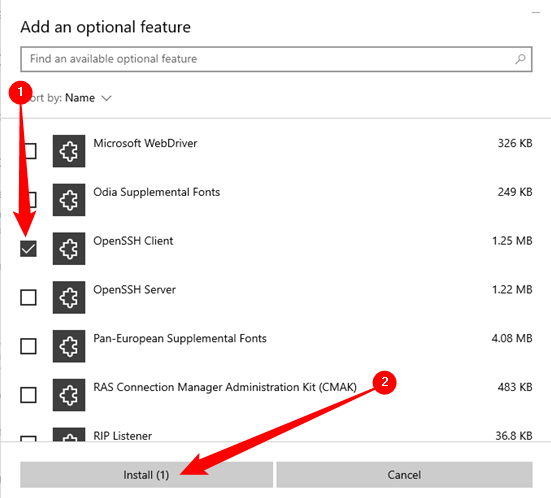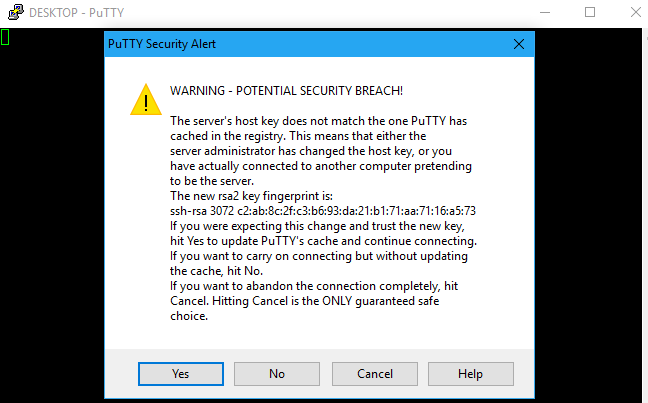
To connect to an SSH server on Windows, install the optional SSH feature and then run “ssh user@exampleIP” in PowerShell or the Windows Terminal. On Linux or macOS, open the Terminal and run “ssh user@exampleIP”.
An SSH client allows you to connect to a remote computer running an SSH server. The Secure Shell (SSH) protocol is often used for remote terminal connections, allowing you to access a text-mode terminal on a remote computer as if you were sitting of it. It can also be used for SSH tunneling, SCP file transfers, and other things.
How to SSH Into a Computer on Windows
Windows 10 and Windows 11 now have an official SSH client you can install. It’s part of Windows 10 and Windows 11 but is an “optional feature.”
To install the OpenSSH Client on Windows 10 or Windows 11, open the Settings app, then navigate to Apps > Apps & Features > Optional Features. Click “Add a Feature,” then scroll through the optional features until you locate “OpenSSH Client.” Tick the box, then click “Install.”

After it is installed, open PowerShell, then use the SSH command to connect to a server. For example:

If you want something with a graphical user interface (GUI) and more flexibility, try out PuTTY instead.
Download PuTTY and launch it to get started. You can download either an installer that included PuTTY and related utilities. or a putty.exe file that can function as a portable application.
Type the host name or IP address of the SSH server into the “Host name (or IP address)” box. Ensure the port number in the “Port” box matches the port number the SSH server requires. SSH servers use port 22 by default, but servers are often configured to use other port numbers instead. Click “Open” to connect.

You’ll see a security alert the first time you try to connect to a server. This tells you that you haven’t previously connected to this server. That’s expected, so click “OK” to continue.
If you see this warning in the future after already having connected to the server once, that indicates the server’s encryption key fingerprint is different. Either the server administrator has changed it or someone is intercepting your traffic and trying to trick you into connecting to a malicious, imposter SSH server. Be careful!

You’ll be prompted to enter the username and password for your account on the SSH server. After you do, you’ll be connected. Just close the window to end the SSH connection.

There’s a lot more you can do with PuTTY. For example, if you need to use a private key file to authenticate with the SSH server, you’ll find this option at Connection > SSH > Auth in the PuTTY Configuration window that appears when you launch the application. Consult PuTTY’s manual for more information. Here’s a fun fact: SSH private keys are technically called PEM files.
How to Use SSH on macOS or Linux
UNIX-based operating systems like macOS and Linux include a built-in SSH command that works pretty much the same everywhere.
To connect to an SSH server from one of these operating systems, first open a Terminal window. On a Mac, you’ll find this at Finder > Applications > Utilities > Terminal. On a Linux desktop, look for a Terminal shortcut in the applications menu.

To connect to an SSH server, type the following command into the terminal, replacing username with your username on the SSH server and ssh.server.com with the host name or IP address of the SSH server:
ssh [email protected]
This command will connect to the SSH server on port 22, which is the default. To specify a different port, add -p to the end of the command followed by the port number you want to connect on, like so:
ssh [email protected] -p 2222

You’ll see a message asking you to confirm the identity of the server the first time you connect. If this is actually the first time you have connected to the server, the message is normal and you can type “yes” to continue.

If you’ve previously connected to the server and see this message, this indicates the server administrator has changed the key fingerprint or you’re being tricked into connecting to an imposter server. Be careful!
You’ll by prompted to type the password the user account requires on the SSH server before continuing. Once you have, you’ll be connected. Close the window or type “exit” and press Enter to end the SSH connection.

You’ll find more information on using the ssh command in the SSH manual page. You can access it by typing man ssh at the terminal, or by viewing it in your web browser. If you’re running your own SSH Server, make sure you lock it down to improve your security.
